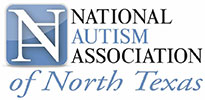“Social distancing” in an already socially disconnected world. How am I supposed to teach my clients social skills when we are being asked to socially distance ourselves and peer opportunities are further limited as we shift to Telehealth? Mid panic, I stopped, took a step back, and removed the autism diagnosis from the equation. After all, as behavior analysts, we don’t target the diagnosis; we target behavior, ALL behavior (anything a living person can do). It was then I realized I’ve been missing the big picture. None of my friend’s kids or my nieces and nephews require a physical presence for social interactions. Half of their birthday parties are video game parties where they sit around a big table, they each have a headset on, and they are playing against each other 3 feet apart around a cake, not looking at each other, but communicating through the game! Or they are communicating via social media, FaceTime, and texts. It’s 2020- not 1920- when this global pandemic has occurred, and we have technology on our side. I’m going to provide some ideas for therapeutic intervention that abide by social distancing guidelines. Some of these ideas can also be used by parents and caregivers at home as well. It’s all going to be okay!
A New World of Opportunities to Connect Through Technology
Turns out, believe it or not, this unusual time has been a blessing. In the past when playdates have been suggested, often either parents or I am met with scheduling conflicts. One kid has a soccer practice, another has band, another has chess club, the parents are going to work, and there’s just no time. However, with self-isolation, quarantine, and social distancing making up our new reality, summer camps are canceled, kids are being home schooled, sporting events and practices are canceled, and many parents have been able to work from home. This has opened up a world of opportunities that just was not feasible before. For my clients who are more conversational and need practice with skills such as conversing with others, staying on topic, taking or feigning interest in other people’s interests, FaceTime and Zoom have been miraculous tools. Zoom in particular has been great because you can share a screen, share control of the mouse, change your background, and give reactions to each other. Zoom has allowed for us to have mini social groups when needed, we have been able to use the share screens features to play board games, or use the white board to play Pictionary. All in all, it’s probably the easiest modality I have used to teach social skills, provide opportunities for socialization, to work on tolerating loosing, turn taking, conversations, and social initiations and reciprocation.
Another wonderful tool for my clients who have good reading and reading comprehension skills has been Animal Crossing. There’s the Nintendo version which requires a lot of fine motor skill; however there is also the Campground pocket version that you can download to your phone which is all touch based. For those of us who may not be familiar with Animal Crossing, it’s a kid friendly game that allows you to create your own island, or campground. You barter with others, and anticipate their needs (perspective taking), make trades (sharing), ask for directions and answer multiple choice questions (conversation and instruction following), you have to problem solve, and you can visit each other’s islands by putting in your friends codes.
But what about individuals who are still developing language and conversation skills, or who may not have the fine motor skills? Well for them I have been using websites like ABC Mouse, or I may create my own games, such as creating a Zingo-like board on a word document to be shared over Zoom to practicing turn taking. I have also been using this time to heavily work on sibling interactions, and during parent sessions working on play and engagement. Siblings that often were off playing sports or engaged in another extracurricular activity are now all together with the rest of their family in one household, with no one but each other to play with. There was a sudden sense of urgency, and while the families I have had the pleasure of collaborating have always gone above and beyond, they have taken it to the next level wanting and asking for more accountability, and basing their kids’ schedules around planned activities. It’s been a game changer! Some of my BCBA friends have also been able to host circle time over Zoom, where the BCBA or therapist, or the client can share their screen, ask questions, and ask a parent to be a shadow for their child during that time to help them successfully participate. It really depends on the child’s skills and parent availability, but with a little creativity and collaboration, there are countless ways to keep engagement and learning going, even while we are physically apart.
Thinking (and Acting!) Like a Kid During Interactive Play
The biggest recommendation I have provided to the parents and older siblings I work with is to act like a kid. Some of my favorite memories as a child were playing with my dad. As an only child from an immigrant family, I didn’t have peers to play with, and my mom came from a family who didn’t really play. So, my playmate was my dad. He took off his adult hat, got down to my level, and I couldn’t have had a cooler friend to play with. He’s honestly where I got most of my play skills from! I owe everything I do today to play with my clients, to him. So don’t be afraid to be silly or to look ridiculous- no one is going to judge you, and your child will appreciate it for years to come. If the child is three years old, it’s not realistic to ask them to sit in a chair at a table for hours on end; they are going to be spending more time playing on the floor. Think about the types of activities your child might be interested (even if a bit unconventional) and how they are playing with those items. If they are playing with kinetic sand, they may want to have their hands buried in it and then jerk their hand up to see the sand fly up. If you are playing with shaving cream, this is a great time to work on reciprocal play, imitation, and social initiations! Make a snow man (shaving cream man), build a mountain or a poop emoji, add food coloring or paint to color the shaving cream, clap your hands or give each other a hard High-5 that sends the shaving cream splattering everywhere like snow. If your client or child enjoys this form of sensory play, it usually leads to a ton of joint attention, communication, imitation, and mutual engagement! Same thing with water play in a bucket! The options are endless!
The point is, in today’s world socialization does not always require a physical tangible presence. There are so many social skills that are based in nonverbal communication, inferencing, and both spoken and unspoken rules for communicating on virtual platforms. In the process of teaching these skills solely in a clinic, we may have been missing out on what is truly socially appropriate and significant for generation Z and generation Alpha. This time has personally given me an opportunity to reflect and think outside- and around the box of how to teach and how to approach learning from what I had become comfortable doing, to what I perhaps should have always been doing more of.
Naureen Surti, M.Ed., BCBA. LBA is a BCBA with over 14 years of experience providing ABA therapy to children and adolescents diagnosed with autism spectrum disorder and other learning disabilities throughout the DFW metropolis in home, school, and clinical settings. She is especially passionate about providing high-quality services to older children and adolescents and serving generally underserved populations and communities.
She can be reached at naureennsurti@gmail.com.


